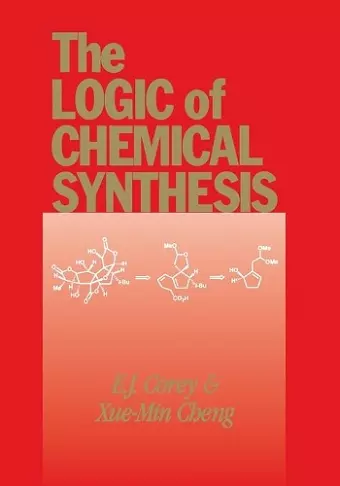The Logic of Chemical Synthesis
E J Corey author Xue-Min Cheng author
Format:Paperback
Publisher:John Wiley & Sons Inc
Published:5th Sep '95
Should be back in stock very soon

The Logic of Chemical Synthesis The title of this three-part volume derives from a key theme of the book-the logic underlying the rational analysis of complex synthetic problems. Although the book deals almost exclusively with molecules of biological origin, which are ideal for developing the fundamental ideas of multistep synthetic design because of their architectural complexity and variety, the approach taken is fully applicable to other types of carbon-based structures. Part One outlines the basic concepts of retrosynthetic analysis and the general strategies for generating possible synthetic pathways by logical reduction of molecular complexity. Systematic retrosynthetic analysis and the concurrent use of multiple independent strategies to guide problem solving greatly simplify the task of devising a new synthesis. This way of thinking has been used for more than two decades by one of the authors to teach the analysis of difficult synthetic problems to many hundreds of chemists. A substantial fraction of the intricate syntheses which have appeared in the literature in recent years have been produced by these individuals and their students. Part Two, a collection of multistep syntheses, provides much integrated information on synthetic methods and pathways for the construction of interesting target molecules. These syntheses are the result of synthetic planning which was based on the general principles summarized in Part One. Thus, Part Two serves to supplement Part One with emphasis on the reactions of synthesis and on specific examples of retrosynthetically planned syntheses. Part Three is intended to balance the coverage of Parts One and Two and to serve as a convenient guide to the now enormous literature of multistep synthesis. Information on more than six hundred interesting multistep syntheses of biologically derived molecules is included. It is hoped that the structural range and variety of target molecules presented in Part Three will appeal to many chemists.
ISBN: 9780471115946
Dimensions: 254mm x 180mm x 25mm
Weight: 798g
464 pages